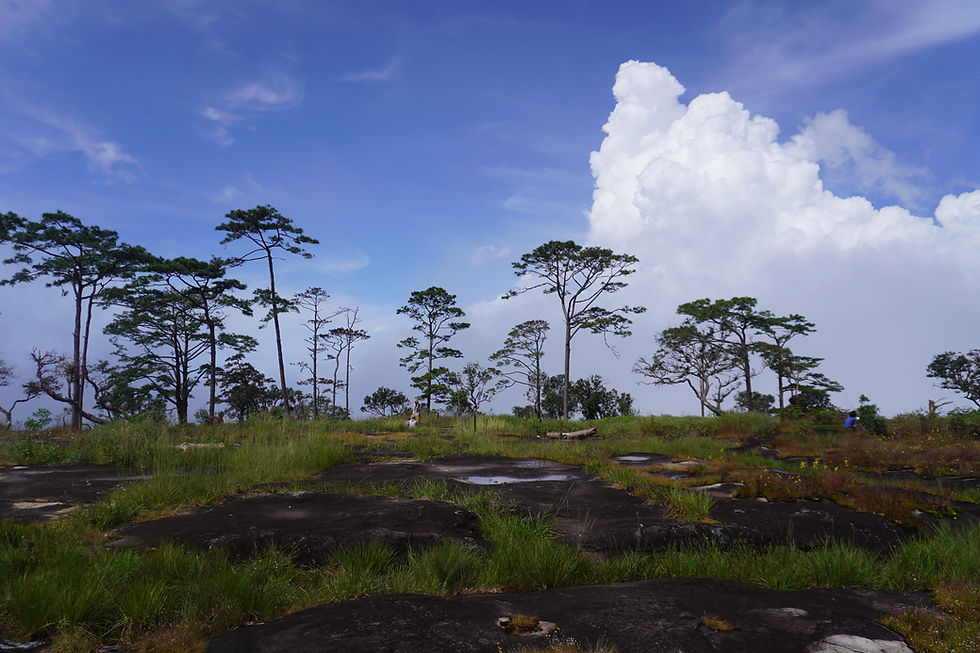Forest Finance: Unpacking REDD+ Initiatives in Southeast Asia
- Simon Kaack
- May 13, 2024
- 3 min read

Walking through the dense, once-unspoiled forests of Southeast Asia, one cannot help but feel a profound sense of loss as the stark reality of deforestation unveils itself. Every fallen tree and cleared patch are also telling a story of rising carbon emissions, as they no longer serve as storage facilities for emissions. To combat this, the REDD+ system, which stands for "Reducing Emissions from Deforestation and Forest Degradation," was created. It is an international effort to reduce emissions from deforestation and forest degradation, promote conservation, sustainable management of forests, and enhancement of forest carbon stocks.
REDD+ aims to provide financial incentives to developing countries to reduce emissions from deforestation and forest degradation. By doing so, it addresses one of the significant contributors to global carbon emissions. This is often achieved through results-based payments, where countries receive funds based on their success in reducing emissions and enhancing forest carbon stocks.

Beyond just reducing emissions, REDD+ emphasizes the conservation of forest carbon stocks. This involves maintaining and enhancing the forest's role as a carbon sink, absorbing more carbon dioxide from the atmosphere. This involves activities that increase the carbon storage capacity of forests, such as reforestation and afforestation, improving the overall carbon sequestration abilities of these ecosystems.
In this regard, REDD+ is supported by various international organizations, governments, and stakeholders, reflecting a collective commitment to combating climate change through improved forest management and conservation practices. Southeast Asian countries collaborate through platforms like the ASEAN Working Group on Climate Change and the ASEAN Regional Knowledge Network on Forest and Climate Change to share experiences, knowledge, and best practices in REDD+.
For example, the Indonesian Katingan Peatland Restoration and Conservation Project is one of the world's largest REDD+ projects in terms of carbon offset. One of the notable REDD+ initiatives in Cambodia is the Oddar Meanchey REDD+ project. It's the country's first REDD+ project, aiming to protect and conserve more than 64,000 hectares of forest.

Cambodia has shown support for REDD+ initiatives through policy development and the establishment of a national REDD+ strategy. Despite the progress, Cambodia faces challenges in REDD+ implementation, including land tenure issues, deforestation pressures, and the need for effective monitoring and enforcement.
These concerns reflect wider sentiments about REDD+. Some argue that it has not effectively reduced deforestation rates and that measuring the actual reduction in emissions is challenging. The complexity of forest ecosystems makes it difficult to accurately quantify carbon savings. Moreover, there are concerns that REDD+ projects sometimes overlook the rights and interests of indigenous peoples and local communities.
REDD+ heavily relies on market mechanisms and carbon trading, raising concerns about the volatility of carbon prices and the dependency on fluctuating market demands, which could affect the sustainability of conservation efforts. Furthermore, while focusing on carbon sequestration, REDD+ might not always prioritize biodiversity conservation. Projects could lead to the creation of monoculture plantations or protect areas that are not high in biodiversity, potentially harming ecological integrity.

However, potential remedies include swift advances in satellite technology, remote sensing, and data analysis, that might improve the monitoring, reporting, and verification (MRV) processes of REDD+ projects. Future REDD+ projects are likely to not only emphasize carbon sequestration but also biodiversity conservation and the maintenance of ecosystem services, aligning with the global biodiversity framework.
As the impacts of climate change become more pronounced, REDD+ strategies may need to adapt to changing environmental conditions, incorporating resilience and adaptation measures to ensure the long-term preservation of forest ecosystems. Overall, the future of REDD+ has to be characterized by a more integrated, inclusive, and holistic approach to forest conservation and climate change mitigation, reflecting the evolving global environmental and socio-economic context.







Comentários